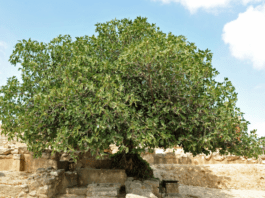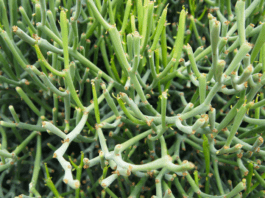
Ostrich Fern
- Matteuccia struthiopteris
- USDA Plant Hardiness Zones 3-7
- Maximum height 6 feet
- Deer resistant
Native plants that love the shade. Our native ostrich Fern is one of the most delicate and durable plants. The common name refers to the fronds or leaves, which look like ostrich feathers.
The fronds can reach 3 feet in height before arching at the tips. They are light and graceful in the breeze. It is effortless to grow, and deer will often leave it alone.
It grows best in damp shade near water or dappled shade at the forest edge. The fronds are protected from wind damage by being planted against walls or shrubs.
This fern is tolerant to more sunlight in cooler climates as long as it is kept moist. However, in the South, it needs more shade. Ostrich fern thrives in moist soil. Underground runners are self-expanding groundcovers that spread underground.
Ostrich ferns are an excellent backdrop for shade-loving perennials like woodland phlox, bleeding heart (Dicentra), plantain Lily (Hosta), and columbine. These ferns are a perfect addition to fresh-cut flowers.
Ostrich Fern Propagation
This fern is the easiest to propagate from spores. However, it can take several months before a plant is large enough to be planted in a garden. Nursery-grown containers produce quicker results.
Autumn is the best time to plant Ostrich Ferns. Because they can take advantage of cooler temperatures and more frequent rainfall, fall planting requires less watering.
Fiddleheads are the emerging leaves of a fern. The fiddleheads are edible for a brief time in spring. It has a flavor similar to asparagus or broccoli rabe. Fiddlehead ferns can be eaten, but not all of them are.
Look for a U-shaped groove inside the stem and a thin brown or papery coating to determine which type. You should only pick a few plants at a time. They become bitter when they get older.
Ostrich Fern Details
Wash the fiddleheads gently and rub off any papery coating before cooking. Fiddleheads are accessible to steam or boil and can be sauteed with garlic or bacon in olive oil.
Description: Fertile fronds are lyre-shaped and grow up to 24 inches tall, persisting throughout the winter while the first frost usually strikes the rest of the plant.
One of the largest ferns forms a basketlike circle of leaves shaped like ostrich plumes, growing up to 60 inches tall and tapering from 14 inches wide to about 1 inch. Sterile leaflets are cut into about 40 pairs.
Found: This perennial grows in low, wet areas in the northeastern two-thirds of the state. It’s found along rivers, in swamps, and in woods. (This one was found at Mississippi River County Park.)
Potential confusion: In Stearns County, the fertile fronds of sensitive ferns also persist through winter, but they are more club-shaped and can grow in drier conditions.




